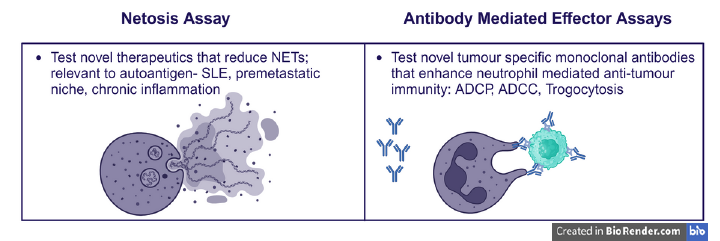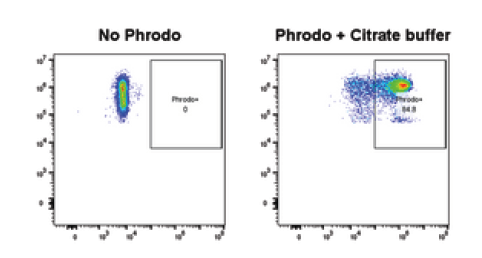Tool for screening immune therapeutics; bench mark therapeutics in an immune check point inhibitor (Pembrolizumab) sensitive assay or ADCC
At Nexus BioQuest, our scientists are experts in NK cell biology and offer a comprehensive suite of assays to test novel therapeutics. View our case study to see how NK cell driven ADCC is being developed for oncology and autoimmunity; targeting either unwanted tumour cells or autoreactive immune cells.
Macrophages are highly plastic and can differentiate into a range of activated phenotypes driven by external signals under various disease conditions. Therapeutic driven modulation of macrophage phenotype has the potential to modulate many different disease types where macrophage play a key role in either driving or regulating disease. We present here a range of macrophage polarisation conditions that model macrophage phenotypes found in different disease states run in 96 well or 384 well screening mode.
Neutrophils are amongst the first immune cells to respond to injury or infection. Armed with a variety of effector mechanisms, they release neutrophil extracellular traps (NETs), comprising of chromatin and antimicrobial proteins which are released via a unique, pro-inflammatory form of cell death called NETosis. Dysregulated NET release can damage the host, contributing to autoimmune diseases such as Systemic Lupus Erythematosus (SLE) by the release of autoantigens. Similarly, dysregulated NET release contributes to diseases such as atherosclerosis, deep vein thrombosis and has been shown to promote cancer progression and metastasis. Modulating neutrophil function is therefore a potential therapeutic intervention. We present data from NETosis and phagocytosis assays which can be used to determine how a therapeutic alters neutrophil function.

Aim to block netosis to reduce inflammation

Fig 1: Neutrophils were isolated from fresh blood, incubated with the NOX2 inhibitor (DPI) and then stimulated with PMA in the presence of SYTOX green to detect NETs. Cells were imaged for green fluorescence (NETs) every 30 minutes for 4 hours. Data shows that NETosis increases over time and is inhibited by DPI.
Aim to enhance neutrophil phagocytosis of targets

Fig 2: Neutrophils were isolated from fresh blood and incubated with pHrodo-labelled E. coli for 60 minutes to allow phagocytosis to occur. Cells were then stained with CD66b and analysed by flow cytometry; phagocytosing neutrophils were identified as CD66b+ pHrodo+ cells. Citrate buffer was used as a positive control for pHrodo staining. Cytochalasin D is included as a reference inhibitor to demonstrate a dose responsive inhibition of phagocytosis.


